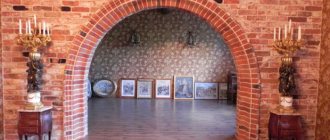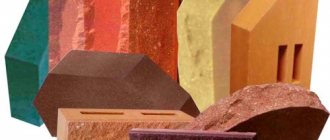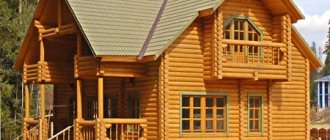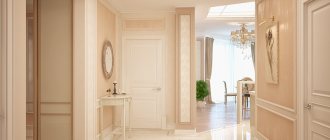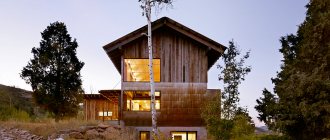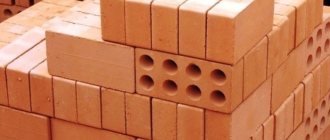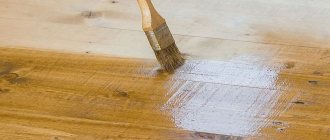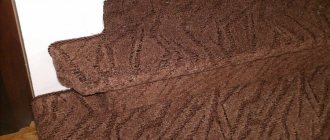When starting to build a house, a person hopes that it will serve him for many years, even outlive him. What a surprise when it turns out that durable building materials and skillful hands of workers are not yet a guarantee of the durability of the structure! Coating brick with varnish is an integral factor in successful construction. It increases the service life of a building or structure. Gives the object a matte or glossy appearance, creating a “wet stone” effect. The appearance of the stone depends on the composition of the mixture. It is recommended to inquire about the ingredients. The application technology will eliminate mistakes in coloring.
Basic properties
Thanks to the varnish layer, the service life of the brick is extended, and it will also acquire decorative qualities and additional attractiveness. Varnish is rarely used for exterior work, because the brick already looks beautiful. But in those regions of our country where the climate is harsh, experts recommend applying an additional protective layer to the facade of buildings. Each type of varnish has the following properties:
- reliably protects the brick wall from the penetration of water and moisture;
- has excellent adhesion, that is, adhesion to the wall;
- strengthens the surface of the brick, penetrating several millimeters deep;
- protects the material from the influence of solvents and chemicals;
- not afraid of seasonal temperature changes;
- does not lose its performance properties when exposed to ultraviolet radiation or sun rays;
- significantly extends the service life of a brick building;
- has high decorative properties;
- provides reliable protection against the growth of fungi and mold.
Once the exterior brick varnish dries on the surface, the wall becomes very beautiful, it can be matte, silky or have a wet stone effect, depending on the type of paint material used. The wall will no longer get wet or dirty, it will acquire dirt-repellent and moisture-resistant characteristics. The surface will be able to withstand high temperatures, especially if a heat-resistant varnish composition was applied, which is mainly used for treating stoves and fireplaces. High-quality varnish materials do not wear off for a very long time and are used for many years.
Varnish for brickwork
Exposed brickwork is the expressive center of the entire interior. It can fit into almost any style, be it loft, hi-tech, country, eclectic or modern. It is worth considering the fact that brickwork plays a leading role in the interior and always attracts attention. That is why designers recommend leaving only one of the four brick walls without plaster finishing. It should not be overloaded with additional decor, so as not to complicate perception and not slide into bad taste. If you live in a panel or monolithic concrete house, but are in love with red ceramic bricks, you can imitate the masonry - use clinker, gypsum or cement based tiles, natural brick cuts.
Many happy owners of exposed masonry often wonder whether it is necessary to somehow protect the surface of the wall. Ordinary brick is porous, absorbs and releases moisture well, is very vulnerable to various contaminants, and therefore requires care. It can be left without any finishing, but it is better to cover it with a decorative and protective material - paint it with varnish, wax or impregnate. The latter composition protects the stone from moisture, fats and household detergents. It contains siloxane compounds, polymers, and carbohydrates.
Brick processing of internal walls
Let us repeat once again that it is mandatory for me to coat the interior brick wall with varnish or other paintwork. Brick withstands weather conditions well, let alone its use indoors. Most often, brick walls are varnished to give them a more neat appearance, to prevent subsequent dusting and soiling, and to facilitate wet cleaning in the future. And the effect of wet stone due to adding additional gloss is also very relevant.
Brick varnish for fireplace
Let’s take a special look at brick stoves and fireplaces. Here the masonry is often also coated with varnish, especially if it is not based on facing brick, but on ordinary building red brick without a smooth surface. Varnishing is a relatively quick and cheap way to decorate such material. The stove varnish must be heat-resistant, since the surface of the fireplace heats up during combustion and accumulates heat for a long time due to the high thermal inertness of the brick.
The procedure for applying varnish to brickwork includes the mandatory removal of traces of dirt, soot, and dust with a wire brush. Furnace experts recommend washing the surface with hot water to ensure that all contaminants are removed. The main tool in this type of painting is an ordinary flat brush, although sprayers are sometimes used. Typically, brick is coated in 2 or even 3 layers, taking into account the porosity of the material. For many people, coating brick with varnish is a rather monotonous job.
Brick facade treatment
Brickwork on the street is rarely painted or varnished. Facing ceramic brick on the facade is not only a structural material, but also an aesthetic finish. It does not need additional protection and decoration, if we talk about modern construction. Processing of facing red bricks is rarely done. The only problem that owners of brick cottages face is the active formation of efflorescence on the surface in the first years after construction. They spoil the appearance of the facade without affecting the strength of the material. To combat efflorescence on the facing coating, water repellents, rather than stone varnishes, are used.
Assortment of varnishes for coating bricks
Petri is a polyurethane universal matte varnish for treating mineral substrates, including varnish for brickwork. It is designed for covering concrete, brick and stone masonry, slate, tiles, paving slabs, paths, terraces, porches, chimneys and even for waterproofing parts of foundations above ground level, canopies, gazebos, porches, driveways to garages, etc. The material is quite wear- and weather-resistant. The resulting coating is easy to clean. Red brick varnish can be applied in just one coat and achieve a matte gloss. When applying the second and third layers, the surface gloss will increase. The varnish is suitable for interior and exterior use.
Neomid Stone acrylic varnish for stone with a wet effect. The material is used in interior and exterior decoration. Has a slight odor. The finished transparent varnish coating is highly durable, weather- and moisture-resistant, and performs protective and decorative functions. You can cover brick on the street, treat interior walls, decorate artificial and natural stone, concrete surfaces and even tiles. The varnish prevents the appearance of mold, efflorescence, and protects against exposure to precipitation. Retains decorative and protective properties for a long time. Water-based material, does not contain solvents. Suitable for interior work and painting the outside of the house.
Varieties
There are several types of brick varnishes used for interior work and for exterior decoration:
- Polymer. These solutions consist of acrylic polymers, alkyd resin, organic solvents, driers, and other additives. After applying this variety, the brick becomes very attractive and acquires the properties of wet stone. Thanks to polymer mixtures, the wear resistance of the material increases significantly. One of the significant advantages of this variety is the possibility of application even in conditions of negative air temperatures, down to -10 degrees.
- Acrylic. These compounds are used to protect bricks when performing external and internal work. Typically, acrylic mixtures are produced as one-component ones; they are based on organic solvents. They impregnate brick very well, protect against mechanical stress, damage, and cracks; this varnish blocks the appearance of efflorescence.
- Solvent. This type is based on silicone resins and a solvent – solvent. These varnishes penetrate deeply into the surface of the brick, creating a highly durable protective layer that does not fade, peel or crack over time. Solvent solutions are fire hazardous, therefore, they must be applied very carefully so that there are no sources of fire nearby.
- Stove or fireplace. These solutions are the most fire-resistant; the most popular mixtures are KO-85 and KO-815. They can be applied when performing external and internal work, in order to strengthen fireboxes and prevent condensation from occurring. After applying this varnish, the brick surface becomes heat-resistant, acquires water-repellent characteristics, stove seams are not washed out or destroyed, and the fireplace or stove masonry becomes very durable.
- Sealing impregnating varnishes. They are made from acrylic and silicone resin, so the brick acquires the highest resistance to wear and mechanical stress. Aliphatic and aromatic solvents are added to impregnations, so they become flowing, due to which they penetrate deeply into the surface of the building material. This protective coating does not turn yellow for many years and remains resistant to moisture, water, chemicals, reagents, oil, and ultraviolet rays. After the varnish dries, the base acquires an attractive shine with a wet stone effect.
How to Paint a Brick House Outside - Types of Paint, Instructions, Mason Tips
Content
Creating beauty inside and outside your home is the natural desire of every home owner.
Painting a brick house protects against adverse weather conditions and at the same time creates an attractive appearance. The availability of paint on a brick facade provides an opportunity to update the appearance of a building without excessive costs. It is worth taking a responsible approach to the choice of paint and varnish coating, then the neat appearance of the external walls will remain for 5 years. This effect is achieved only by maintaining the paint application technology, not forgetting about the necessary preparation. It is not recommended to paint fresh brickwork, since drying, weathering of the material and leaching are completed only after 6 months.
Popular manufacturers
One of the proven and reliable manufacturers, which has been producing paint and varnish products for many years, is German. It offers more than 200 products, including varnishes and protective impregnations, which make brick walls more attractive and protected from moisture and destruction. The treated surface becomes silky and shiny, without changing its shade.
The Petri Corporation, located in the USA, is a stable manufacturer of paint and varnish products. This concern produces varnishes and impregnations that have the effect of wet stone. The protective products of this company are invariably of high quality; they are made on a polyurethane basis and prevent the destruction, abrasion and contamination of bricks.
, located in Russia, produces reliable Neomid STONE impregnation, used for bricks and decorative stones. The protective layer is matte or semi-matte and protects the walls from moisture absorption, mold and mildew. The varnish solution is odorless, so it can be used indoors.
is one of the leading domestic corporations that produces high-quality paint and varnish products. A line of products is produced for the protection of concrete and brick surfaces, the following very popular and effective varnishes are “Texil”, “Protexil”, “Aquastone”, “Epoxol”. Products are manufactured using modern technologies from high-quality, world-famous foreign materials.
How to paint brick and how to do it
Painted brick quite often solves a lot of surface finishing problems. This is not an expensive finishing option, but quite effective in terms of surface preservation. Moreover, today there are a lot of dyes that make an ideal plane from the point of view of design solutions. Today we will look at the question of how to paint a brick and what needs to be done for this. After all, the coating should not only be attractive, but also reliable.
Selection rules
When choosing a varnish, the first thing you need to consider is where it will be used. If it will be applied to the facade of a house or any street building, then it is better to give preference to a solution that is resistant to precipitation, water and moisture. In addition, the facade mortar must be able to withstand the influence of ultraviolet rays of the sun and create an attractive decorative layer. And if you are choosing a varnish to coat decorative bricks, then you need to choose a mixture specifically for this material.
Other requirements apply to varnishes for fireplaces and stoves. For these objects, you need to select a solution that is non-toxic and resistant to high temperatures. A heat-resistant type of varnish for bricks is specially made for application to fireplaces; during the heating process, such a mixture does not emit toxic or harmful substances to humans.
For application indoors on brick walls, you must choose silicone or acrylic material. In stores today there is a huge selection of varnish products, so you can very easily choose any product based on the required characteristics and cost of the product.
General Tips
You will have to paint in at least two layers. If the paint is light in color, then two coats may not be enough. Buy paint based on the number of layers.
We recommend using a primer. It greatly increases the adhesion of compounds and reduces material consumption. The cost of primer is significantly cheaper than paint, which increases the economic efficiency of its use.
Apply primer to the wall before painting
When choosing rollers, give preference to soft options. Hard ones leave a lot of gaps on uneven surfaces.
Cover the junctions of brick walls or elements with other structures with masking tape. If you have some practical skills, do not glue anything, but at the joints, finish the remaining unpainted surfaces with a brush. If you work carefully, the junction line will be smooth, you won’t have to correct or clean anything.
Painting a brick wall
Painted brick facade
Surface preparation
Before applying varnish, you need to clean the brick surface. If there is old finishing material on it, for example, varnish or paint, it must be removed either with a solvent or a hair dryer. Excess cement mortar is knocked down with a hammer and chisel. If there are small cracks, they are sealed with latex brick paint, which, after drying, is removed from the wall using sandpaper. If there are large cracks, they are first expanded, sealed, and then cleaned and sanded. The following steps are followed:
- the surface is washed to remove efflorescence, dirt and dust. This can be done using detergent and a soft foam sponge;
- the wall is drying out. The surface must be completely dry, since varnish cannot be applied to a wet base;
- if efflorescence appears again, they must be removed again using a hard sponge, after which the wall is dried again;
- the surface is treated with deep penetration soil. It is advisable to use a primer from the same manufacturer as the varnish.
Types of paint
Repainting a brick home is the fastest way to make worn walls look attractive again. The variety of modern paint and varnish coatings allows you to find a suitable option in terms of price and quality. Differences in the chemical composition of each species distinguish the following groups:
- limestone,
- latex (polyvinyl acetate),
- organosilicon.
Lime mortars consist of readily available components, which allows you to apply inexpensive façade paint yourself. The base is slaked lime, to which mineral pigments and filler are added. After drying, this coating is highly resistant to moisture and heat, but retains breathability. Latex and silicone coatings are superior to lime coatings in decorative properties and have improved adhesion (adhesion), but have a higher cost.
Application rules
The varnish is applied in almost the same way as regular paint. The first thing you need to check is the air temperature, it should be in the range from -10 to +30 degrees. However, not all formulations can be applied at subzero temperatures. You can choose one of the suitable application methods - using a spray gun, roller or brush. If the solution will be applied by spraying, then you need to dilute the varnish to the required consistency using a suitable solvent. It is advisable to apply the varnish composition not in one, but in two or three layers. After applying each layer, you need to give it about 1-2 hours to dry.
If you don’t have a spray bottle, you can apply the varnish with a long-haired roller; its bristles should be one and a half to two centimeters long. You can also use a stiff, thick brush. Adjacent stripes or strokes must be overlapped by a couple of millimeters.
The application process must begin from the top corner and move down. If the first layer is applied vertically, then the next one must be applied horizontally. It is best to carry out varnishing in warm, dry, summer weather so that the composition lays evenly and there are no streaks. Caring for a varnished wall is very simple; it is enough to wash it twice a year with warm soapy water, and then rinse with clean water.
Painting sand-lime brick
painting sand-lime brick
It seems that nothing is simpler, I bought paint and treated the wall, but in order to complete a high-quality coating, you need:
- choose the right dye;
- carry out preparatory work;
- comply with processing requirements.
Let's look at the painting process and decide on the right choice of materials.
Our works
| Cleaning bricks from efflorescence Moscow, st. Kalinina, 10 | |
| Painting a brick house Moscow, st. 8th Line, 6 | |
| Painting an apartment brick building Moscow, st. Svetlaya, 11 |
Rules for painting bricks
This work is not that simple. Here, first of all, you need to think through everything and decide what paint to paint the brick with. After all, construction does not tolerate errors; in this work, both the painting material and the dye that will be applied are important. Now let's deal with these questions in order.
Attention: If you do everything yourself, then listen to literally all the advice and recommendations. All the details of the work are important here.
Choosing a dye
There are a lot of dyes, the choice here will not be difficult. First of all, we look at the environment in which the material resides. After all, how to paint a brick stove differs significantly from painting the facade.
Select by type of dye:
For external surfaces
This material perfectly tolerates temperature changes and high humidity. But the outer plane is under strong influence of the external environment and the dye will not last so long. So it's worth thinking about it. This material will last much longer from interior dye.
For interior work
This coating does not withstand high temperatures and high humidity. It is used only in enclosed spaces and preferably heated ones. It is possible to apply a thinner layer. Moreover, people create masterpieces when painting. Here everything depends on your imagination.
Heat-resistant dyes
It is quite possible to paint a brick stove with this dye. It tolerates high temperatures. But not coal fires. To finish such structures, it is better to use clinker brick as a finishing material; it is also made in the form of tiles and does not take up much space.
Note: How to paint different brick colors will depend on the color saturation. But it is better to select a dye according to the tone of the material itself. Otherwise, more paint will be lost.
Installation technology
Gypsum tiles are best glued to bases made of concrete, gypsum, brick, plasterboard, and also covered with plaster. The lining is carried out at temperatures above +10 degrees.
If you are gluing gypsum tiles onto some non-standard surface, for example, onto old tiles, it makes sense to make a layer of material that adheres well to both the cladding and the base. For a tile base, this can be high-quality strong tile adhesive.
Why is processing needed?
The weakest point in the masonry is the seams. It is through them that moisture penetrates inside, and during frosts the water freezes. There it expands and impacts the bricks, causing the material to collapse. Also, some types of brick can absorb moisture through the pores, which does not have time to dry and remains inside, resulting in microcracks and chips, which also leads to destruction. To protect bricks from corrosion, experts recommend treating them with special compounds and carrying out hydrophobization.
A typical preservative consists of iron oxide, purified water, and binding agents that can penetrate the silicate and enhance its properties. The binder in such a liquid is potassium silicate, which can interact with salts. This helps improve the protective properties of ceramic products, protects them from UV exposure and mold. Protective compounds also improve the appearance and color of bricks.
The compositions increase the resistance of the wall to frost and eliminate the possibility of chips or cracks on them. At the same time, the stone does not lose vapor permeability.
Which impregnation to choose
In the Trivita online store you will find the following water repellents for brick walls and masonry joints:
All these mixtures are different:
- High strength after drying.
- High adhesion to the base.
- Affordable price (as they are produced in Ukraine).
- Excellent water-repellent characteristics.
So, let's summarize. The application of the water repellent is carried out in 2 stages. First you need to protect the foundation and plinth, and then the facade walls. We wish you to live in a house that is not afraid of humidity and heavy rains!
Seam processing
The seams between the stone elements should be made as even as possible. To do this, use a tool such as a jointer, which allows you to make the seams almost identical. After installation, the seams are filled with a moisture-resistant solution using a wooden stick. Only smooth and correct seams can give a stone pattern a finished look. If the stone is laid in even tiles, then finishing the seams and highlighting them may not be necessary. This installation is considered seamless and the stones are simply joined tightly together.
In order not to damage the structure and color of the stone, metal brushes should not be used when caring for it.
Method of use
The paint and varnish product is produced in liquid form, which can be used immediately.
It must be mixed well before use.
If the mixture is thick, then you can add a thinner of about 10% (no more) of the total amount. White spirit is used as a thinner.
To work with the base, use a brush, roller or even a tampon. If the future “wet” base is brick, made of paving slabs, then to create a layer with good protection it is enough to varnish the base once.
If the surface is porous, it is better to coat the varnish two to three times. The time you need to wait between different layers is about 8 hours.
If the paintwork has a water base, it is still better to work with a mask. There should be no sources of ignition near the workplace, because the varnish burns well.
It is also necessary that there is good air circulation in the room during the painting process and after applying the substance.
From the beginning, the stone, before making it “wet”, needs to be cleaned of various contaminants, grease, dust, and then dried well.
If sidewalk tiles are to be painted, you need to be sure that they are not washed away from the underside.
It is also important that the tiles are all well secured.
Necessary tools for coating decorative stone
They will be needed not only for painting tiles, but also for preparing paints and varnishes. To obtain a homogeneous composition of the required consistency you need:
- drill or screwdriver with mixing attachment;
- measuring container;
- tray or bath.
Using an electric tool will allow you to prepare the paint with an even distribution of the dye throughout the volume. To paint gypsum stone yourself, you must have:
- set of brushes;
- spray gun with nozzles or airbrush;
- metal spatula or scraper.
Before starting work, any remaining adhesive, mortar and dirt are removed from the surface of the tile. After this, they are wiped or blown with air. Do not use a brush after cleaning tiles for painting. If the application of paint and varnish is carried out with a spray gun, then it should be placed at a distance of about 0.4 m from the surface to be painted. This will ensure an even layer without drips or sagging.



